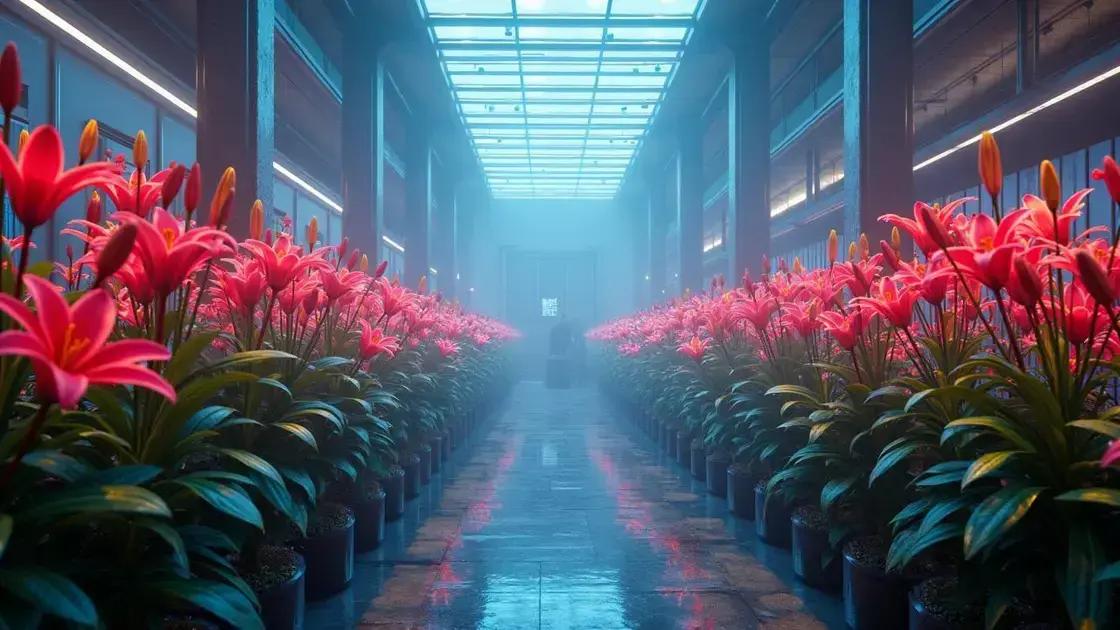How to Take Care of a Lily Plant Indoors: 5 Essential Tips
How to take care of a lily plant indoors may seem challenging, but it doesn’t have to be. With the right guidance, even beginners can cultivate a vibrant lily oasis. Each step plays a crucial role in ensuring your plants thrive beautifully, from watering to lighting. Let’s uncover essential practices to elevate your indoor gardening game.
Table of Contents
ToggleEssential watering techniques for your lily plant
How to take care of a lily plant indoors starts with understanding the essential watering techniques for your lily plant. Proper watering is crucial for maintaining the health and vibrance of your indoor lilies. These beautiful blooms can thrive indoors if you commit to a consistent watering schedule and adapt to their specific needs.
Start by considering the following watering techniques to keep your lily plant blooming:
- Check soil moisture: Before watering, always test the soil with your finger. If the top inch of soil feels dry, it’s time to water.
- Water evenly: When you water your lily, try to distribute the water evenly around the base to encourage healthy root development. Avoid overwatering in one spot.
- Use room temperature water: Cold water can shock your lily plant. Always use water that’s at room temperature.
- Consider humidity: Lilies prefer a more humid environment, so if your indoor air is dry, mist the leaves occasionally or place a small humidifier nearby.
Signs of Overwatering or Underwatering
It’s vital to recognize the signs of improper watering:
- Signs of overwatering: Yellowing leaves, wilting, or a musty smell from the soil.
- Signs of underwatering: Browning leaf tips, drooping, or dry soil that pulls away from the pot edges.
Monitoring these signs can help you adjust your watering pattern accordingly.
Creating a Watering Schedule
To keep your lily flourishing, consider implementing a regular watering schedule. For most indoor lilies, watering every 7-10 days is a good starting point.
- Check soil moisture before each watering.
- Adjust frequency based on the season; lilies often require less water in the winter.
- Record observations in a garden journal to track your lily’s growth and preference.
By understanding how to care for your lily plant indoors through appropriate watering techniques, you’ll provide the healthiest environment for it to thrive.
Optimal lighting conditions for indoor lilies

Optimal lighting conditions for indoor lilies are crucial for their growth and blooming. Providing the right light helps your lilies stay vibrant and healthy. These beautiful flowers thrive best with specific light requirements that cater to their needs.
Indoor lilies prefer bright, indirect sunlight. Here are some essential tips to ensure they receive optimal lighting:
- Place your plant near a south or east-facing window where it can get plenty of bright, indirect sunlight.
- Avoid direct sunlight, which can scorch the leaves and flowers.
- If natural light is limited, consider using grow lights as an alternative source.
Lighting Duration and Intensity
Understanding the duration and intensity of light your lily plant requires is vital:
- Provide at least 12-14 hours of light per day for optimal growth.
- If using artificial lighting, ensure it mimics the spectrum of natural sunlight.
- Monitor the intensity; too much light can lead to brown tips on leaves, while too little can hinder blooming.
Adjusting Light Conditions Through Seasons
As seasons change, so do lighting conditions. Be sure to adjust as needed:
- In winter, when natural light is limited, consider moving your lily closer to windows or increasing artificial light.
- During summer, be vigilant about sunlight intensity, as prolonged exposure might require pruning back foliage to prevent damage.
By optimizing the lighting conditions for your indoor lilies, you’ll ensure their growth remains robust and their blooms breathtaking. Remember, understanding their needs can transform your indoor gardening experience into a thriving one!
Soil and fertilizer tips for healthy lily growth
Soil and fertilizer tips for healthy lily growth are essential to creating a thriving environment for your indoor lilies. The right soil composition and fertilizer application will not only enhance the growth of your plants but also promote vibrant blooms.
When it comes to soil, lilies prefer well-draining mixtures. Consider the following soil tips for optimal growth:
- Choose a potting mix designed for bulbs or flowering plants, which typically includes organic matter for better aeration.
- Consider adding perlite or coarse sand to improve drainage and prevent root rot.
- Avoid heavy garden soils; they may retain too much moisture and suffocate the roots.
Fertilizing your lilies effectively
In addition to proper soil, using the right fertilizers is key. Here’s how to nourish your lilies:
- Select a balanced, water-soluble fertilizer, ideally with an N-P-K ratio of 10-10-10 or similar. Apply monthly during the growing season.
- Use organic fertilizers like compost or well-rotted manure for a gentle, nutrient-rich supplement.
- Incorporate a slow-release fertilizer at the beginning of the growing season to sustain nutrient levels.
Understanding signs of nutrient deficiency
Being aware of your plant’s health indicators can help you maintain proper nutrient levels:
- Yellow leaves may indicate nitrogen deficiency, while stunted growth can suggest a lack of essential nutrients.
- Check for dark green foliage that indicates a healthy nutrient balance.
By utilizing these soil and fertilizer tips for healthy lily growth, you will create an ideal environment for your indoor plants. Remember, proper care is essential to enjoy the full beauty your lilies can offer.
In conclusion
Caring for your indoor lily plant involves several critical factors, including optimal watering, lighting, soil, and fertilization techniques. By implementing the essential tips discussed, you can ensure your lilies thrive and flourish beautifully in your home. Consistent attention to their unique needs will result in vibrant blooms and healthy growth, transforming your indoor gardening experience. For more insights and tips on enhancing your indoor garden, feel free to explore additional resources.

